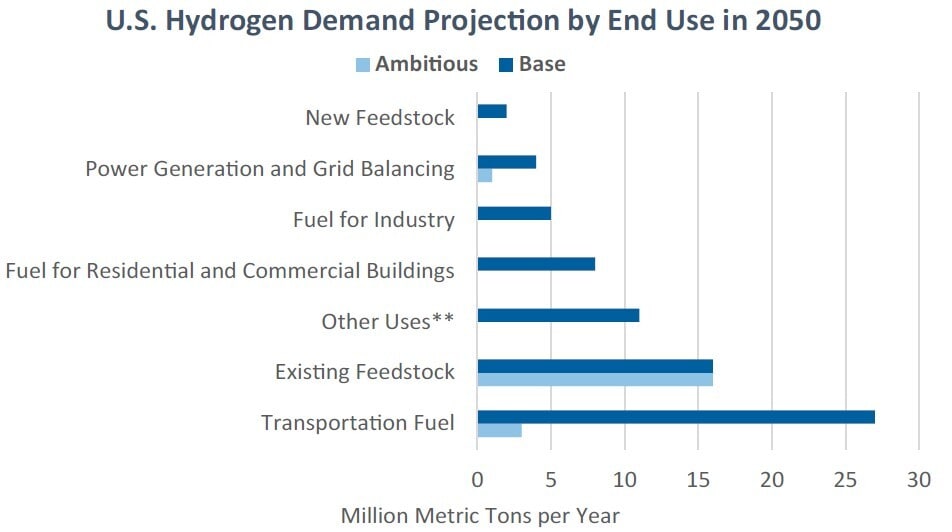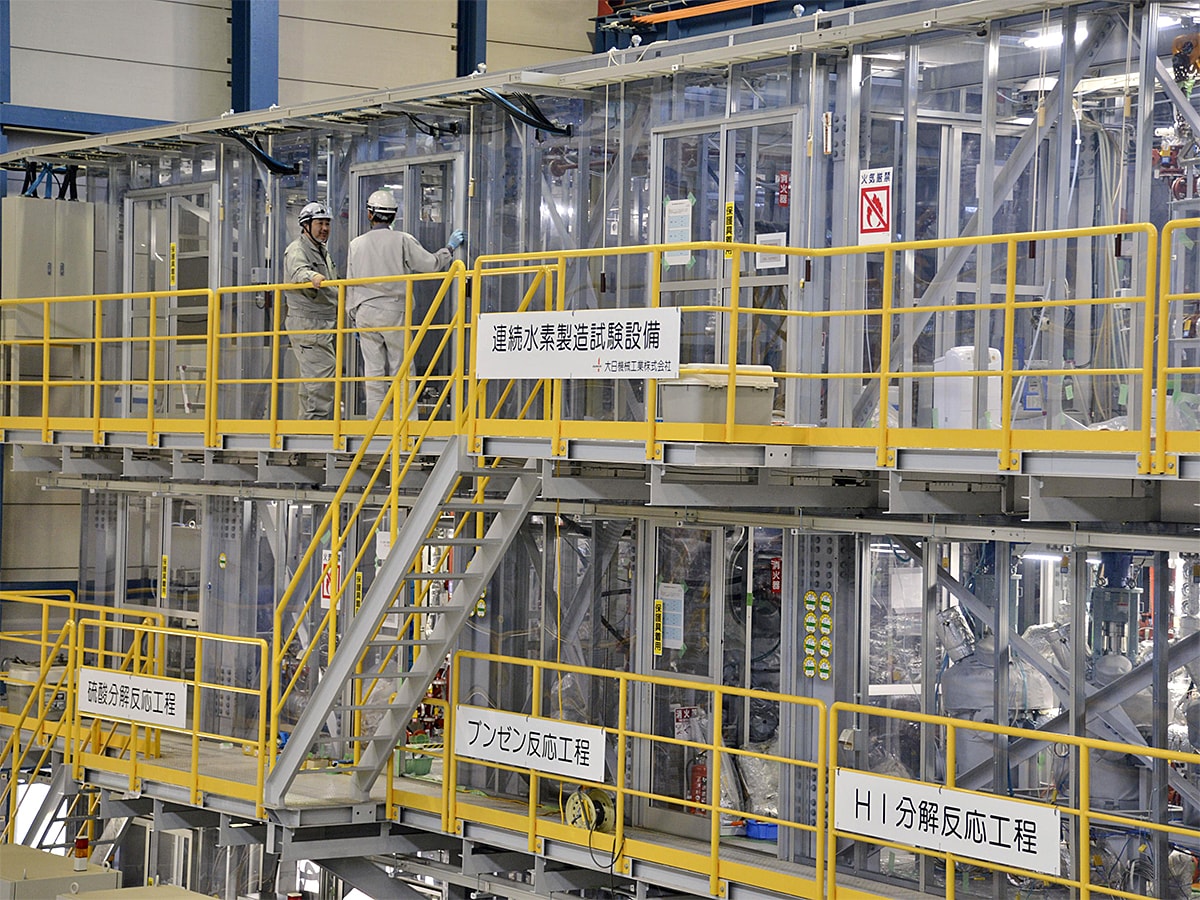In this article, US-based investment manager Direxion — which launched the Direxion Hydrogen ETF in March 2021 —explores the investment potential of hydrogen and why the push to cleaner energy could boost demand for the natural gas.
Hydrogen is the simplest element on earth and makes up over 90% of all the atoms in the universe.
Hydrogen’s simplicity and versatility offer lots of applications for integration into renewable energy, but until recently, its high cost made it less attractive than other sources. This is rapidly changing.
Hydrogen is the new solar — maybe much better
Hydrogen is one of the most promising sources of clean fuel on the world’s path to net-zero emissions. The Fuel Cell & Hydrogen Energy Association’s (FCHEA) forecast for future demand sees over 15 million metric tons of increased demand for hydrogen as a feedstock, and that number is roughly the same in both the base and ambitious cases.
We view this is as an incredible case of support for hydrogen as an efficient and low-cost input for powering machines or industrial processes, especially in areas where pure electrification is not possible.
Transportation fuel sees the largest divergence between the two scenarios, with an ambitious target representing 27 million metric tons per year. In many ways, there are similarities between the hydrogen industry today and solar a decade or so ago.
Hydrogen demand projected to accelerate

Source: FCHEA, as of 31 December 2020, data in million metric tons per year.
The first hydrogen fuel cell electric vehicle (FCEV) prototype was unveiled in 1966, but it was not until 2013 that the world’s first production FCEV was launched. Considering the small size, the number of hydrogen-fuelling stations in the US is modest.
At the end of 2019, there were 183 total stations in the US. According to projections from the FCHEA, the number could jump to 5,800 if ambitious deployment targets occur.
Hydrogen fuel stations projected to jump

Source: FCHEA, as of 31 December 2020.
Governments around the globe, including the United States, are making coordinated efforts to promote green energy. A large percentage of the proposed $2.6trn American Jobs Plan (AJP) is dedicated to clean energy and environmental initiatives.
Rather than taxes and regulations, the AJP proposes significant tax credits to incentivise the production and use of clean energy sources. According to Goldman Sachs [GS], federal investment, production, and vehicle tax credits will subsidise about $15bn per year in clean energy.
The AJP proposes to increase these credits to about $40bn per year or more. The extent to which hydrogen will play a role in all of this remains to be determined, but it is garnering considerable attention today given the versatility hydrogen has in application across renewables.
The future of clean hydrogen: There’s an ETF for that
The Direxion Hydrogen ETF [HJEN] seeks investment results, before fees and expenses, that track the Indxx Hydrogen Economy Index. The index tracks the performance of companies providing goods and/or services related to the Hydrogen Industry.
Close to 40% of the Direxion Hydrogen ETF is comprised of fuel cell and battery-related companies. These companies manufacture fuel cells and batteries running on hydrogen-based technology. Hydrogen production and generation companies that are involved in the process of hydrogen generation, either in liquid or solid form, represent 25% of the ETF.
Hydrogen systems and solutions firms offering equipment, components or technology used in hydrogen industry are close to 22%. Lastly, hydrogen storage and supply companies, which are engaged in providing storage and transportation services of hydrogen, round out the fund with 14% exposure.
This article was originally published in Direxion’s Spotlight newsletter on 4 May 2021.
Disclaimer Past performance is not a reliable indicator of future results.
CMC Markets is an execution-only service provider. The material (whether or not it states any opinions) is for general information purposes only, and does not take into account your personal circumstances or objectives. Nothing in this material is (or should be considered to be) financial, investment or other advice on which reliance should be placed. No opinion given in the material constitutes a recommendation by CMC Markets or the author that any particular investment, security, transaction or investment strategy is suitable for any specific person.
The material has not been prepared in accordance with legal requirements designed to promote the independence of investment research. Although we are not specifically prevented from dealing before providing this material, we do not seek to take advantage of the material prior to its dissemination.
CMC Markets does not endorse or offer opinion on the trading strategies used by the author. Their trading strategies do not guarantee any return and CMC Markets shall not be held responsible for any loss that you may incur, either directly or indirectly, arising from any investment based on any information contained herein.
*Tax treatment depends on individual circumstances and can change or may differ in a jurisdiction other than the UK.
Continue reading for FREE
- Includes free newsletter updates, unsubscribe anytime. Privacy policy






